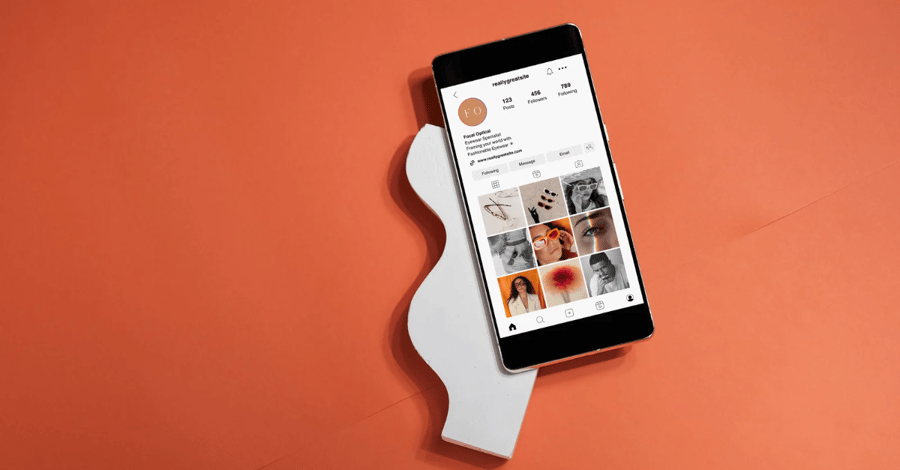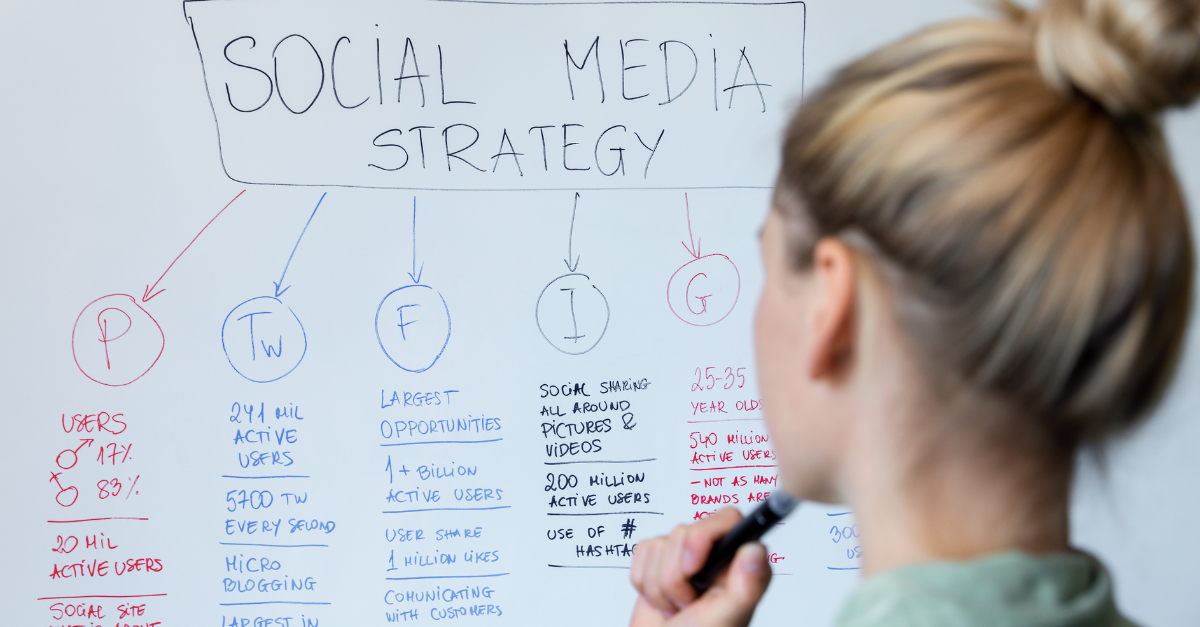In a competitive city like Montreal, where ...

Maximizing Your Online Presence: The Ultimate Guide to Website and Social Media Integration
30 Dec 2023
Integrating your website with social media isn’t just a trendy move—it’s a strategic necessity that can amplify your brand’s reach, engagement, and sales. Website social media integration is vital for enhancing visibility, user engagement, and overall online presence. By creating a seamless connection between your online platforms, you can transform casual visitors into loyal customers, all while enhancing their experience with your brand.
Why Integrate Social Media Into Your Website?
Boosting Engagement and Sales
Connecting your social media to your website can spark greater engagement, encouraging visitors to interact with your content, share it, and ultimately make purchases. When your site showcases real-time social feeds or user-generated content, it gives potential customers the social proof they need to feel confident in their buying decisions, enhancing your overall marketing efforts.
Enhancing Brand Visibility
Your website is often the first touchpoint for new visitors, and integrating social media ensures that your brand stays top of mind. Embedding social content creates more touchpoints for interaction, increasing your brand’s visibility across multiple platforms and making it easier for visitors to become followers. Additionally, embed social media feeds to enhance engagement and user interaction, which can further boost your brand's visibility and digital marketing success.
Streamlining Customer Interaction
Social media integration makes it simpler for customers to connect with you. Whether they’re logging in via social accounts, engaging with a live chat linked to your social platforms, or easily sharing your content, this streamlined process makes for a smoother user experience that can lead to deeper customer relationships.

Key Benefits of Social Media Integration
Driving Sales through Social Proof
Showcasing user-generated content, reviews, and testimonials from social media directly on your site builds trust and credibility. This social proof is often the nudge potential customers need to complete a purchase, as it reassures them that others have had positive experiences with your brand.
Expanding Reach and Growing Your Follower Base
Integrating social media into your website is an effective way to grow your audience. When visitors see engaging content and have the option to follow or share your brand with a click, they’re more likely to spread the word, helping you reach a wider audience organically.
Creating a Dynamic, Interactive Website
A website that features dynamic content from your social media feeds is far more engaging than one that remains static. Live updates, interactive elements, and fresh content keep visitors coming back, turning your website into a hub of activity that mirrors the vibrancy of your social presence.
Strategies for Effective Integration
Embedding Live Social Feeds
Embedding live social feeds is a highly effective way to keep your website content fresh and engaging. Whether it’s a stream of tweets, an Instagram gallery, or Facebook updates, these feeds showcase your brand’s active social presence, encouraging visitors to join in.
Curating High-Quality Content
It’s essential to ensure that the content in your live feeds reflects your brand’s quality and values. Highlight posts that resonate with your audience and consider featuring user-generated content that showcases real-life experiences with your brand.
Driving Engagement with Dynamic Content
Dynamic content like live social feeds can significantly increase website engagement. Visitors are more likely to interact with your site if they see it’s regularly updated with relevant, engaging content. Integrating social media videos can drive engagement and enhance user experience by capturing user attention and encouraging interactions. This not only keeps your site feeling fresh but also encourages visitors to share what they find, boosting your reach.
Leveraging User-Generated Content (UGC)
User-generated content is one of the most powerful tools in your marketing arsenal. By showcasing customer photos, reviews, and social media posts on your website, you build a sense of community and trust around your brand.
Building Trust and Authenticity
When potential customers see real people using and enjoying your products, it adds a layer of authenticity that’s hard to replicate with traditional advertising. UGC tells your brand’s story from the perspective of those who matter most—your customers.
Creative UGC Implementation
You can integrate UGC into your website in numerous ways, such as featuring a gallery of customer photos, embedding social media posts that mention your brand, or highlighting top reviews on product pages. These elements not only add credibility but also enhance the user experience.

Incorporating Social Media Buttons
Social media buttons are a straightforward yet impactful way to connect your website visitors with your social platforms. Whether they’re used for sharing content or following your profiles, these buttons can significantly extend your brand’s reach.
Effective Placement of Social Buttons
Where you place these buttons matters. They should be easily accessible but not overpowering. Consider adding them at the top or bottom of pages, or near key pieces of content that are likely to be shared. The design should also align with your brand’s aesthetics to ensure a cohesive look.
Impact on Brand Interaction
Well-placed social media buttons make it effortless for visitors to engage with your brand. When sharing and following are just a click away, you’re more likely to see an increase in interaction and a growing social media presence.
Utilizing Follow and Share Buttons
Follow and share buttons play a crucial role in spreading your brand’s message. They make it easy for visitors to amplify your content and invite others into your community.
Encouraging Organic Advocacy
When visitors share your content, they’re not just engaging with your brand—they’re endorsing it. This kind of organic advocacy is invaluable, introducing your brand to new audiences through trusted recommendations. By making these buttons prominent and easy to use, you encourage more of this valuable activity.
Implementing Hashtags on Your Website
Hashtags aren’t just for social media—they can also play a powerful role on your website. Integrating relevant hashtags encourages visitors to participate in the conversation and helps your content gain traction across platforms.
Creating Impactful Hashtags
Effective hashtags are unique, memorable, and aligned with your brand’s messaging. Encourage your audience to use these hashtags when sharing content related to your brand, creating a cohesive and trackable campaign.
Driving Engagement through Hashtags
When used strategically, hashtags can significantly boost user-generated content and brand discussions. By promoting these hashtags on your website, you foster a sense of community and encourage visitors to contribute their own content, enhancing both engagement and brand visibility.
Advanced Integration Techniques
Social Media Sign-Ins
Allowing visitors to log in via their social media accounts simplifies the user experience and encourages more sign-ups. This integration not only makes your site more accessible but also connects your website activity directly with your social presence.
Simplicity and Engagement
Social media sign-ins reduce the friction of account creation, making it more likely that users will engage with your site. The easier you make it for users to log in and participate, the more likely they are to stick around and interact with your content.
Using Open Graph and Twitter Cards
Open Graph tags and Twitter Cards let you control how your content appears when shared on social media, ensuring that it’s presented in the best possible light.
Optimizing Social Sharing
Metadata plays a crucial role in how your content is perceived and shared. By optimizing your website with Open Graph and Twitter Cards, you ensure that your posts are visually appealing and informative, increasing the likelihood of clicks and shares.
Embedding Shoppable Instagram Feeds
For eCommerce businesses, shoppable Instagram feeds offer a direct link between social media and sales. By embedding these feeds on your website, you create a seamless shopping experience that’s both engaging and convenient.
Seamless Shopping Integration
Integrating a shoppable Instagram feed allows users to browse and purchase products directly from your Instagram posts, all without leaving your website. This seamless experience can significantly boost conversion rates by reducing the steps needed to make a purchase.

Common Mistakes to Avoid
Poor Placement of Social Media Icons
Misplaced social media icons can disrupt the user experience, leading visitors away from your site too soon. Strategic placement is key to ensuring that these icons enhance rather than hinder your site’s performance.
Keeping Visitors Onsite
While social media integration is valuable, it’s important to ensure that it doesn’t lead to premature exits from your site. Carefully consider where and how you place social icons to keep visitors engaged with your website content.
Inconsistent Branding Between Website and Social Media
Consistency across all your platforms is crucial for maintaining a strong brand identity. Discrepancies in branding between your website and social media can confuse visitors and weaken your overall image.
Maintaining a Cohesive Brand Experience
A consistent look and feel across your website and social media channels reinforces your brand’s identity. This consistency helps build trust and makes your brand more memorable, ensuring a unified experience for your audience.
Overloading Pages with Social Plugins
While social plugins can be beneficial, overloading your site with too many can slow down its performance and overwhelm visitors. Balance is key to maintaining a user-friendly experience.
Balancing Functionality and Speed
Too many social plugins can clutter your website and slow down load times, leading to a poor user experience. Focus on integrating only the most essential features to keep your site running smoothly while still offering the social connectivity your audience expects.
Main Key Takeaways
Integrating social media with your website is a smart move that can significantly boost engagement, visibility, and sales. By embedding live feeds, leveraging user-generated content, and carefully placing social media buttons, you can create a dynamic online experience that drives business growth.
FAQs
What social media platforms should I focus on for integration?
Focus on platforms where your target audience is most active, such as Facebook, Instagram, Twitter, or LinkedIn.
How often should I update my social media feeds on my website?
Regular updates ensure that your content remains fresh and relevant. Aim to refresh your feeds on a daily or weekly basis, depending on your brand’s activity level.
What tools can help with social media integration?
Tools like Flowbox, Hootsuite, and Buffer can simplify the process of integrating and managing your social media content across your website and other platforms.






